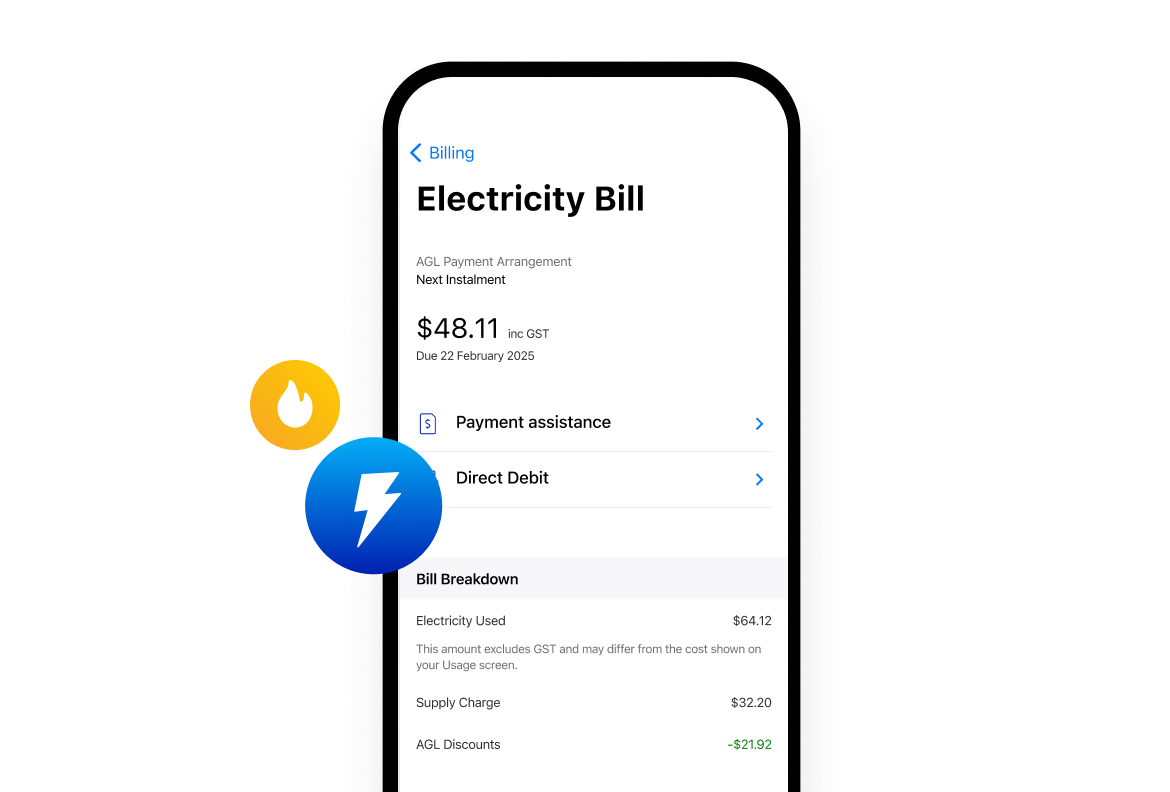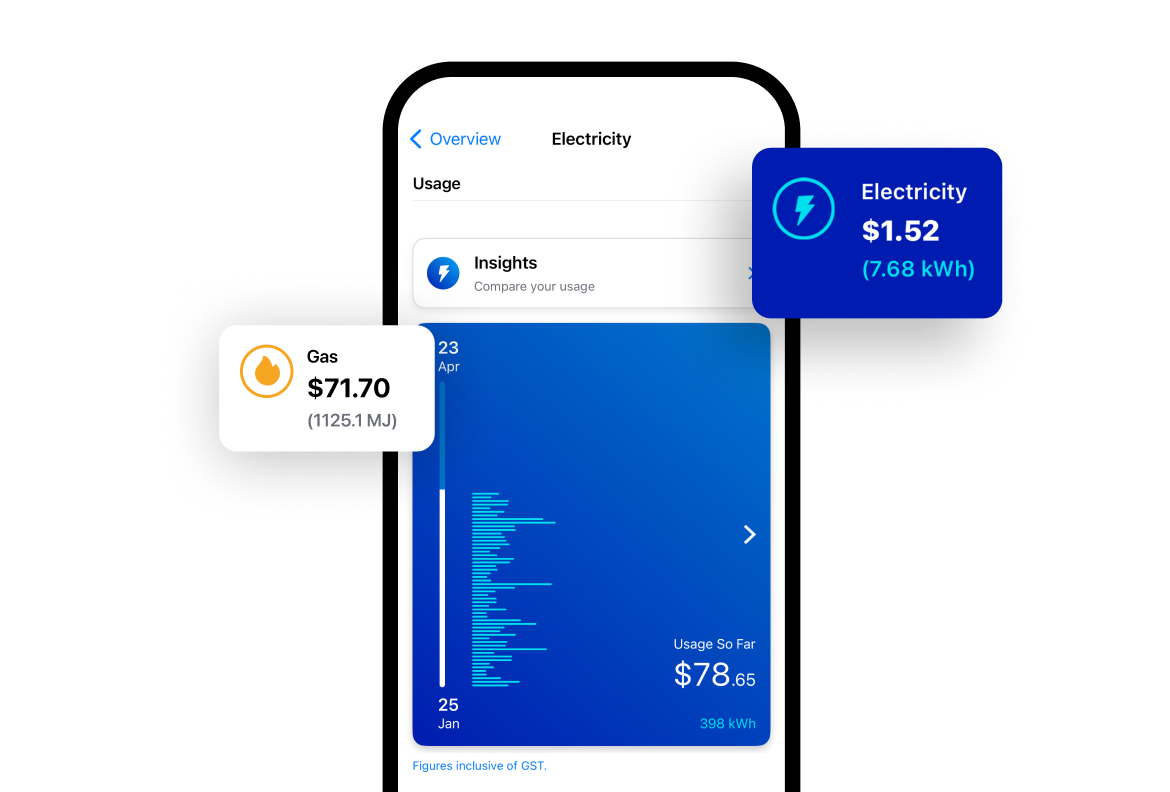Digital meters
With a digital meter, also known as a smart meter, you'll receive more accurate electricity bills and view timely usage data in My Account and the AGL app.
With a digital meter, also known as a smart meter, you'll receive more accurate electricity bills and view timely usage data in My Account and the AGL app.
Digital meters are the next generation of electricity meters. A digital meter measures your home electricity use every 30 minutes, giving you better access to information including how much electricity you use and when. They automatically send this data to your energy retailer via a secure wireless network.
Digital meters are an important step if you want your home to support more modern energy systems like solar and batteries.


If you have a digital meter, you may have more electricity plan options available to choose from. And with more access to your usage data, you have more information about how you use electricity to help select the right plan for you.
Contact us if you’d like to discuss your plan.
By 2030, customers are required to transition to a digital meter following reforms by the Australian Energy Market Commission (AEMC). These reforms introduce new customer protections against any upfront costs, explicit informed consent of retail tariff changes, improving access the benefits that smart meters provide, reducing barriers to installation and improved meter testing and inspections.
For more information, visit the AEMC website.
In most cases, where we exchange your existing meter for a digital meter, you won’t have to pay for any upfront costs.
In some cases, following a visit from our meter technician, you may be asked to undertake remedial works at your own (or your landlord’s) cost to ensure the site is safe, accessible and suitable for a new meter installation.
Digital meters are not dangerous.
They have features to protect you from electric shock and fire damage. All digital meters meet the wireless electromagnetic exposure limits set by the Australian Radiation Protection and Nuclear Safety Agency (ARPANSA). They also meet current Australian Standards, including those related to safety.
Digital meters emit less radiation than many other electrical devices commonly found in households, such as mobile and cordless phones, Wi-Fi modems, microwaves, televisions and baby monitors.
For more information visit the ARPANSA website.
Digital meters and their communication networks have advanced security features that stop unauthorised access.
The wireless links between digital meters and AGL are encrypted and cannot be disabled. These links don’t use the internet which make them very secure. And no customer names or addresses are attached to the transmission of metering data.
The meter number and NMI (National Meter Identifier) are matched up with customer information only after it has reached the central data station, which is secure. For more details, view our Privacy Policy.
Data is sent to us from the digital meter using a secure wireless communications network.
The collection, use and disclosure of metering data is subject to strict confidentiality rules.
By law, metering data can only be accessed by customers, the meter reader, your energy retailer and others who are entitled to it (e.g. authorised bodies, distribution networks or third-party service providers who have your consent).
All energy retailers must comply with the Privacy Act, which includes the National Australian Privacy Principles. These Principles set clear restrictions on the use, disclosure and storage of personal information.
For information about how we'll handle any personal information, read our Privacy Policy.
Our digital meters are rigorously tested to make sure they are accurate. They're approved by the National Measurement Institute to the standard metering accuracy level. Also, we monitor and facilitate regular testing to confirm the accuracy of our meters.
The digital meter operates at a low frequency and power level and will not interfere with any other equipment such as phones, TV or radio.